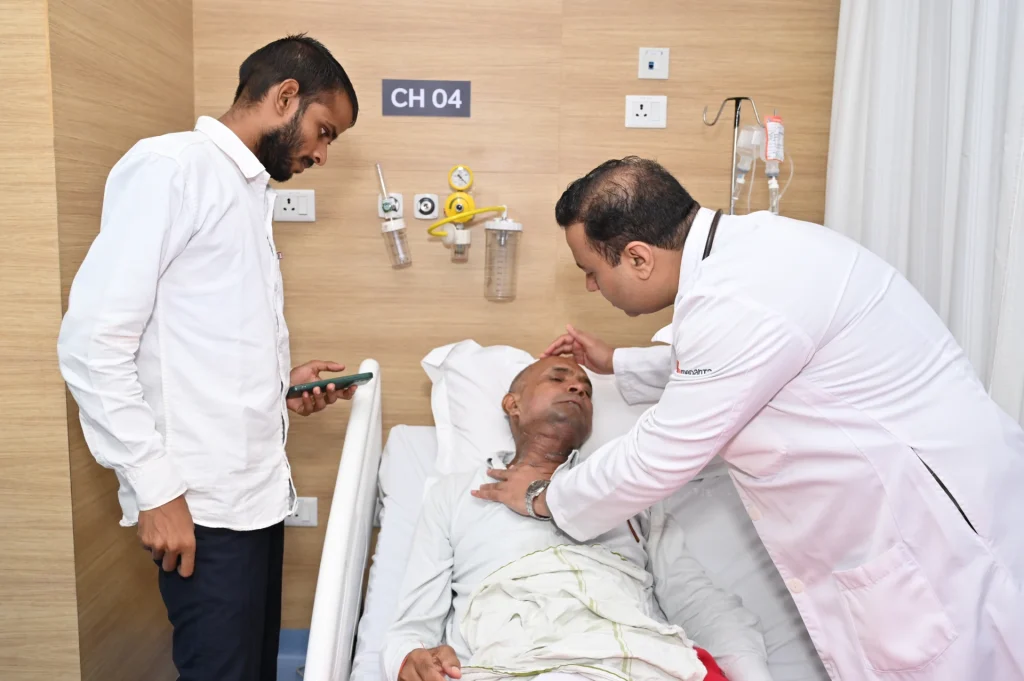- CANCER HELPLINE: 1800-22-1951
- 91 7317418888
- contact@drharshatreya.com
- CANCER HELPLINE: 1800-22-1951
carousel-slider domain was triggered too early. This is usually an indicator for some code in the plugin or theme running too early. Translations should be loaded at the init action or later. Please see Debugging in WordPress for more information. (This message was added in version 6.7.0.) in /home/locaqain/public_html/drharshatreya/wp-includes/functions.php on line 6121B-cell lymphomas are a group of cancers that originate in B lymphocytes (B cells), a type of white blood cell crucial for the immune system. These cancers are part of a broader group called non-Hodgkin lymphomas (NHL), and they represent about 85% of all NHL cases. B-cell lymphomas range from slow-growing (indolent) to aggressive forms and affect lymph nodes, bone marrow, spleen, and other organs. Understanding the type of B-cell lymphoma is essential for determining the most effective treatment.
Prognosis varies by the type and stage of B-cell lymphoma. Aggressive forms like DLBCL, when treated early, have a relatively high success rate. The 5-year survival rate for B-cell lymphomas can range from 60% to 90% depending on the subtype, with indolent types often having long-term survival but requiring ongoing monitoring.

Living with B-cell lymphoma can present challenges, especially with aggressive forms. Regular follow-ups, a balanced diet, and support from healthcare providers, family, and support groups can help patients manage side effects and maintain a good quality of life. Participation in clinical trials can also be an option for patients seeking new or advanced treatments.
Symptoms vary depending on the type and stage of the lymphoma but commonly include:
Swollen Lymph Nodes: Enlarged, painless lymph nodes in the neck, armpit, or groin are often the first sign.
Fever and Night Sweats: Persistent fever, particularly in the evening, and drenching night sweats are common.
Unexplained Weight Loss: Losing weight without a known reason can be a sign of lymphoma.
Fatigue: Constant tiredness or lack of energy may occur even with adequate rest.
Abdominal Pain or Swelling: Enlarged lymph nodes or an enlarged spleen can cause discomfort or bloating.
Itchy Skin: Itchiness, particularly on the lower limbs, may be associated with certain types of B-cell lymphomas.
Bone Pain or Back Pain: When lymphoma spreads to bone marrow, it can cause pain in the bones or back.
Accurate diagnosis involves several tests to determine the type and stage of lymphoma:
Physical Examination: Doctors will examine swollen lymph nodes, spleen, and liver for signs of enlargement.
Blood Tests: Blood tests can indicate anemia, low platelets, or high white blood cell counts, which may suggest lymphoma.
Lymph Node Biopsy: The most definitive diagnosis involves a biopsy of an affected lymph node. The tissue sample is analyzed to determine the presence and type of cancer cells.
Bone Marrow Biopsy: A biopsy of the bone marrow may be done to check for cancer spread.
Imaging Tests: CT scans, PET scans, or MRI may be used to assess the size, location, and spread of tumors within the body.
Flow Cytometry and Immunohistochemistry: These specialized tests help identify specific markers on cancer cells, confirming the type of lymphoma.
Treatment depends on the type, stage, and patient’s health, with options including:
Chemotherapy: A primary treatment for B-cell lymphomas, chemotherapy uses drugs to kill cancer cells. CHOP (cyclophosphamide, doxorubicin, vincristine, and prednisone) is a common combination for aggressive lymphomas.
Radiation Therapy: Radiation is used to shrink localized tumors and may be combined with chemotherapy for early-stage lymphomas.
Immunotherapy: Monoclonal antibodies like rituximab target specific proteins on lymphoma cells, improving the immune system’s ability to destroy them.
Targeted Therapy: Targeted therapies, such as ibrutinib or venetoclax, inhibit specific proteins that cancer cells rely on for growth and survival.
Stem Cell Transplantation: In cases where lymphoma has returned or failed to respond to initial treatment, a stem cell transplant (autologous or allogeneic) may be considered to restore healthy bone marrow after high-dose chemotherapy.
CAR T-Cell Therapy: A newer approach, CAR T-cell therapy modifies a patient’s T cells to attack lymphoma cells specifically. This therapy has shown promising results, especially for relapsed or refractory B-cell lymphomas.
Watchful Waiting: For indolent or slow-growing lymphomas like follicular lymphoma, immediate treatment may not be necessary. Patients are closely monitored and only treated if symptoms progress.
© 2024 Harshvardhan Atreya. All Rights Reserved.